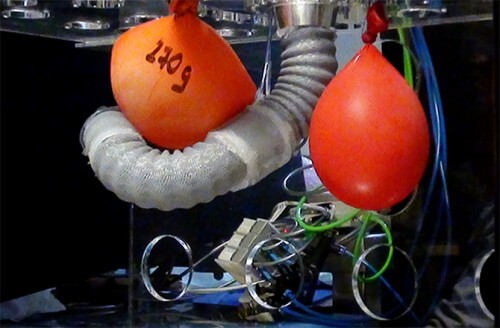Italian researchers have succeeded in developing a robotic arm that mimics the Octo-Bot octopus arm, which can stretch, contract, lift and hold not just any objects but even delicate body parts without damaging them.

By: Dafna Haim-Langford
About ten years ago, a project was started at the Pentagon to create a complete octopus with eight arms that is able to crush, hold and take objects gently and flexibly similar to the arms of the real octopus. Engineers and biologists from a number of institutes around the world tried to build different parts of the project, but an entire octopus has not yet been completed.
Over the years, researchers from Italy, who were involved in the original project, managed to develop one arm out of the eight, the Octo-Bot, which can stretch, contract, lift and hold not just any objects but even delicate body parts without damaging them. The engineers behind the robotic arm claim that the development could be used during surgeries and replace the metal tools used today. Inspired by the octopus arm, the robotic arm is very flexible around the organs during surgery, but when it reaches the target organ, it hardens and can perform the required surgical operation. The researchers believe that the device can reduce the amount of tools needed in surgery and thus reduce the size of the surgical incision. In addition, according to the researchers, the flexibility and softness of the device has an advantage in preserving internal organs over the metal surgery tools available today.
The octopus body is not rigid, so it can adapt its body shape to the environment. The octopus arm, which has the ability to lengthen and shorten, the ability to move in all directions and the ability to form joints at any given point along the arm and allow the arm to catch prey. Similar to the octopus arm, the robotic arm is also flexible and soft as long as it is on its way to the target organ. Upon reaching the target organ in the body, it can be tightened at any given point to create a joint for the purpose of performing a surgical operation, thus reducing the surgical incision.
The developed device is built with three silicon coils capable of expanding and moving towards each other. Each coil contains a membrane filled with granular material kept under vacuum. When pneumatic control allows the release of air into the membrane for the purpose of creating a soft and flexible structure and air release is used to reduce the volume available for the granular material and to create a rigid structure in the form of a joint for bending the arm in the desired direction.
From tests conducted on the robotic arm it was found that the bending capacity reaches 255 degrees and the arm can be extended by 62%. In addition, the mechanical stiffness level of the arm ranges from 60% to 200%.
Full Article
